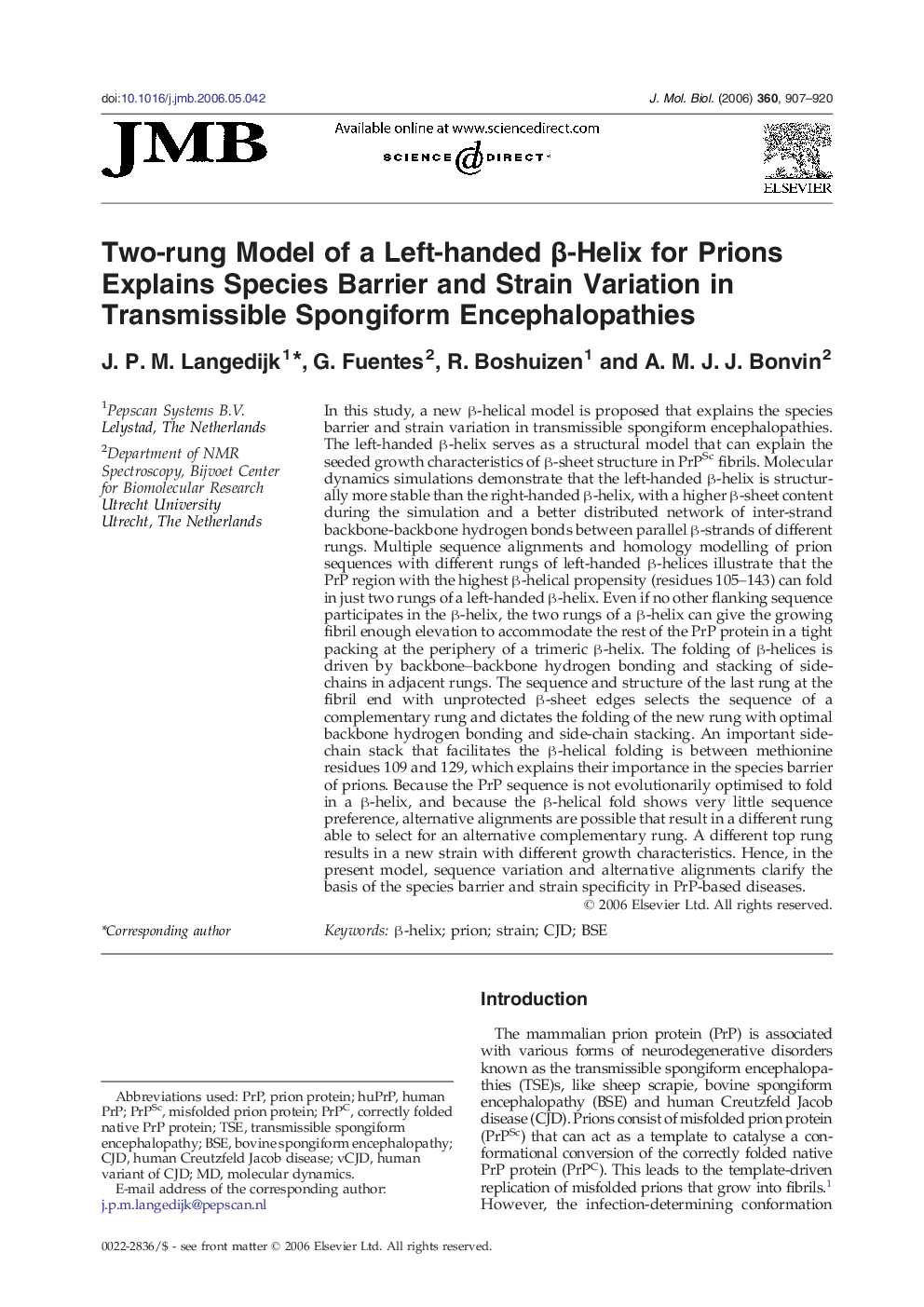| کد مقاله | کد نشریه | سال انتشار | مقاله انگلیسی | نسخه تمام متن |
|---|---|---|---|---|
| 2189467 | 1096212 | 2006 | 14 صفحه PDF | دانلود رایگان |

In this study, a new β-helical model is proposed that explains the species barrier and strain variation in transmissible spongiform encephalopathies. The left-handed β-helix serves as a structural model that can explain the seeded growth characteristics of β-sheet structure in PrPSc fibrils. Molecular dynamics simulations demonstrate that the left-handed β-helix is structurally more stable than the right-handed β-helix, with a higher β-sheet content during the simulation and a better distributed network of inter-strand backbone-backbone hydrogen bonds between parallel β-strands of different rungs. Multiple sequence alignments and homology modelling of prion sequences with different rungs of left-handed β-helices illustrate that the PrP region with the highest β-helical propensity (residues 105–143) can fold in just two rungs of a left-handed β-helix. Even if no other flanking sequence participates in the β-helix, the two rungs of a β-helix can give the growing fibril enough elevation to accommodate the rest of the PrP protein in a tight packing at the periphery of a trimeric β-helix. The folding of β-helices is driven by backbone–backbone hydrogen bonding and stacking of side-chains in adjacent rungs. The sequence and structure of the last rung at the fibril end with unprotected β-sheet edges selects the sequence of a complementary rung and dictates the folding of the new rung with optimal backbone hydrogen bonding and side-chain stacking. An important side-chain stack that facilitates the β-helical folding is between methionine residues 109 and 129, which explains their importance in the species barrier of prions. Because the PrP sequence is not evolutionarily optimised to fold in a β-helix, and because the β-helical fold shows very little sequence preference, alternative alignments are possible that result in a different rung able to select for an alternative complementary rung. A different top rung results in a new strain with different growth characteristics. Hence, in the present model, sequence variation and alternative alignments clarify the basis of the species barrier and strain specificity in PrP-based diseases.
Journal: Journal of Molecular Biology - Volume 360, Issue 4, 21 July 2006, Pages 907–920